Zeljko Kojadinovic, MD- Neurosurgeon and Pain Specialist
Pain can be acute (lasting up to 3 weeks), subacute (lasting 3 weeks to 3 months) and chronic (lasting more than 3 months).
Acute pain is useful at the beginning of the illness because it indicates that there is a pathological process taking place. Any pain that lasts longer than 3 weeks tends to remain persistent and to become an illness in and of itself. That’s why it should be treated from the very beginning.
Chronic pain is resistant to standard therapy. About 25% of the population will need therapy for chronic pain at some point in their life. It can be cancerous or noncancerous pain. Musculoskeletal and neuropathic pain represents 80% of all chronic pain syndromes.
PAIN ANATOMY
Most of these pain syndromes have similar diagnostic and therapeutic approaches. The following facts apply to most pain locations “from head to heel,” such as headache, facial pain, neck pain, shoulder pain, arm pain, back pain, leg pain, knee pain, foot pain, heel pain etc.
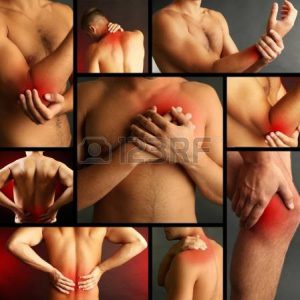
For any pain treatment to be successful, it is important to identify:
- Which anatomical structure is the source of the pain (pain anatomy).
- What kind of pathologic process is taking place in that structure.
When anatomical sources and pathological processes are identified, success in pain treatment (healing or significant reduction) is achieved in 70-90% of patients. Again, these results are for patients who have been suffering from pain for a long time and previous treatments have had no effect. By our approach, we can do this and tailor the combination of modern medications specific just for you. Contact us for a consultation.
Pain anatomy means that every region of the body can have 10-20-30 possible sources of pain such as muscles, nerves, ligaments, joints, tendons, fascia, bursa, etc.
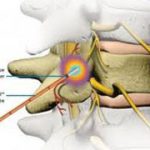
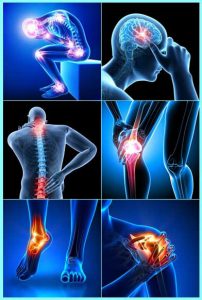
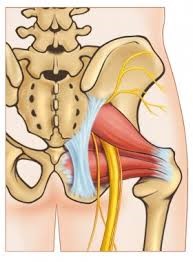
Pathological proccesses in or around these structures can include inflammation, pressure, strain, overstretching, spasm, neuropathy, etc.
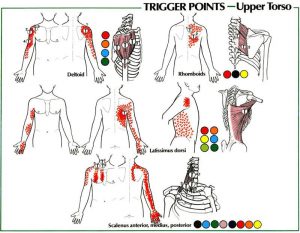
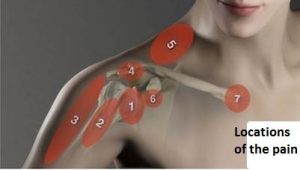
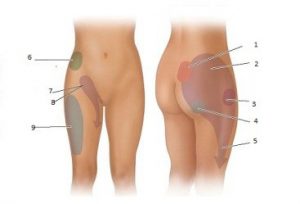
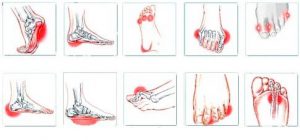
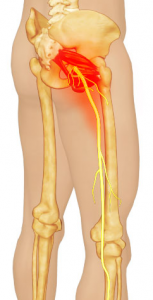
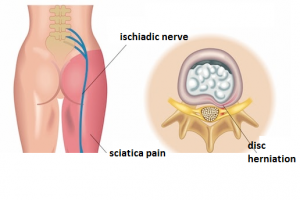
Without knowing the real cause of the pain, most diagnoses are not accurate enough. Unfortunately, these diagnoses are treated as final diagnoses. Examples of diagnoses that are not precise enough include sciatica, cervical syndrome, lumbar degenerative pain, spondilopathy, gonarthrosis, rheumatic disease, headache, etc. In these situations, contributing factors are usually declared to be the main reasons for the pain, such as old age, obesity, bad posture, degenerative changes, psychological overreaction, sickle cell anemia, etc. Even if these factors cannot be changed easily, it doesn’t mean that the patient has to suffer the pain until the issue is resolved.

PAIN DIAGNOSIS
To determine which anatomical structure is the cause of pain, a long conversation with the patient covering all important details is essential. In everyday practice, this conversation is too often conducted without really “listening” to the patient and without entering into important details.

Diagnostic images usually include X-Ray, CT (Computer tomography), EMNG, MRI, minimally invasive pain diagnostic interventions, etc.
With this approach there are many pain syndromes that can be treated successfully without surgery: all kinds of headache, occipital headache, trigeminal neuralgia, neck pain (cervical syndrome), shoulder pain, arm pain, elbow pain, postherpetic and intercostal neuralgia, dorsal pain, back pain, sciatica, cervical and lumbar disc protrusion (treatment without operation is often successful), hip pain, leg and gluteal pain, knee pain, ankle and foot pain (like Morton’s neuroma, Tarsal tunnel syndrome, etc.).
PAIN TREATMENT
Pain treatment includes:
Contemporary medications– It is very important to know different types of pathologic processes and to treat them with proper combinations of types and dosages of medications. It is always individual. During treatment it is important to monitor the situation and adjust therapy as necessary. The aim of this kind of treatment is to reduce the pain in a few days. It is important for the patient to maintain significantly reduced or no pain for at least 6 weeks in order to achieve a more lasting result. To provide this during this period, the doctor must be available to the patient at any time, so that he can easily contact him if the pain increases.
With this approach, it is possible to achieve an excellent result even with long-term persistent pain in over 80% of cases (back pain, headache, postherpetic neuralgia, trigeminal neuralgia, etc.).
By our approach, we can do this and tailor the combination of modern medications specific just for you. Contact us for a consultation.
Usually physicians start with nonsteroidal anti-inflammatory drugs (NSAID like metamizole, ibuprofen, paracetamol, etc.). Sometimes opioid analgesics are prescribed too early or for too long. There are other types of medications and procedures which can make opioid usage unnecessary.
- Physiotherapy- is very important, but, if unsuccessful, should not be repeated many times without trying other solutions
- Acupuncture– This treatment method can be valuable, especially in combination with others. Alternative pain treatments are usually not sufficient when intensive pain lasts more than three months and is resistant to the usual medications.
- Chiropractic- the same as acupuncture
- Alternative therapy – the same as acupuncture
- Surgical treatment (the most aggressive method of treatment – performed by a neurosurgeon):
- Minor surgical interventions – removal of nerve pressure, removal of nerve scars, etc.
- Neuromodulation of pain – spinal cord stimulation or deep brain stimulation
- Installation of pumps for permanent application of opioids and other drugs in the spinal canal
- Other methods
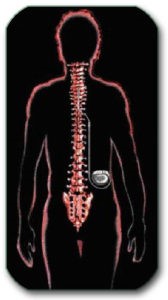
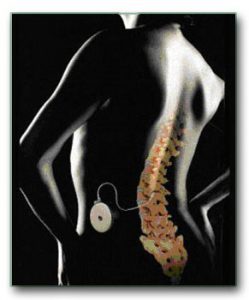
Trigeminal neuragia
Trigeminal neuragia – typical (trigeminal neuralgia, trigeminal neuralgia, facial neuralgia, head neuralgia) is a pain in the face that occurs suddenly, is of great intensity and lasts usually up to 1 minute. Patients often describe it as an electric shock, a stab,…
>> FULL TEXT on trigeminal neuralgia and treatment of facial pain
Headache
Headache is one of the most common painful conditions and is more common in women. In 90% of cases, it is the result of spasms (spasms) of the muscles of the head and neck.
Headaches are divided into primary, in which the headache is the primary disease, and secondary, which are a consequence of some other diseases. Primary headaches include migraines, tension headaches, and so-called cluster headache…
>> FULL TEXT about headaches
Shoulder pain
The shoulder is the most mobile joint. Numerous anatomical structures are in its composition or give it support and thus there are numerous potential sources of pain. In addition, there are distant causes where the pain spreads to the shoulder. (eg related to the cervical spine, numerous surrounding nerves,… >> FULL TEXT on the treatment of shoulder pain
Hip pain
>> FULL TEXT on the treatment of hip pain
Knee pain
Knee pain can be the result of: injury, inflammation, degenerative changes and more…
>> FULL TEXT on the treatment of knee pain
Pain in the foot and pain in the Achilles tendon
In the case of foot pain, it is important to determine with special examinations and recordings (X-rays and possibly magnetic resonance imaging of the feet) from which of the many structures the pain originates. (joints, tendons, fascia, muscles, bursae, nerves)…
>> FULL TEXT on the treatment of foot pain
Postherpetic neuralgia
It is a chronic neuropathic pain that lags behind herpes zoster infection in 20% of cases. The infection is caused by the varicella-zoster virus (re-infection with the smallpox virus) and is more common in the elderly and immunodeficient people. Infection and subsequent pain extend along the nerves…
>> FULL TEXT on postherpetic and intercostal neuralgia
Polyneuropathy
Polyneuropathy means damage to several peripheral nerves, especially in the extremities…
>> FULL TEXT on polyneuropathy
Fibromyalgia
Fibromyalgia is a chronic condition or painful syndrome characterized by muscle, ligament and tendon pain accompanied by fatigue. Certain points in the body that are very painful to the touch are also characteristic ..
>> FULL TEXT about fibromyalgia
Postoperative pain
Pain may persist after numerous surgeries. Examples of surgeries are: breast amputation, limb amputation, lung surgery, heart surgery, gallbladder surgery, hernia surgery, various abdominal surgeries, hip surgery, knee surgery, cesarean section and other gynecological surgeries,…
>> FULL TEXT about postoperative pain
Pain that mimics internal organ disease (e.g., heart, lung, stomach, bladder, etc.)
There are a number of pain syndromes that mimic other diseases. We often have the opportunity to treat patients who have been examined many times and treated for a long time due to suspected disease of certain organs (heart, lungs, stomach, liver, esophagus, intestines, kidneys, etc.,when actually the reason was damage to the nerves of the trunk. ……
Palliative therapy
Palliative treatment is predominantly performed when no cure is expected in the patient. This includes the treatment of pain, which has its own specifics in relation to the classic treatment of pain.
Pain of unknown origin and diagnosis and treatment
We often have the opportunity to examine and treat patients with various pain syndromes who have previously received an insufficiently accurate diagnosis and have been declared incurable or even imagined their own pain…
>> FULL TEXT
More information about pain treatment – here

